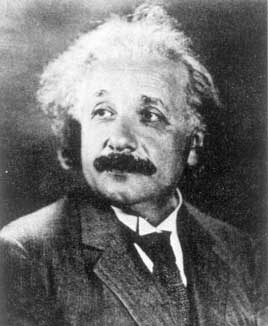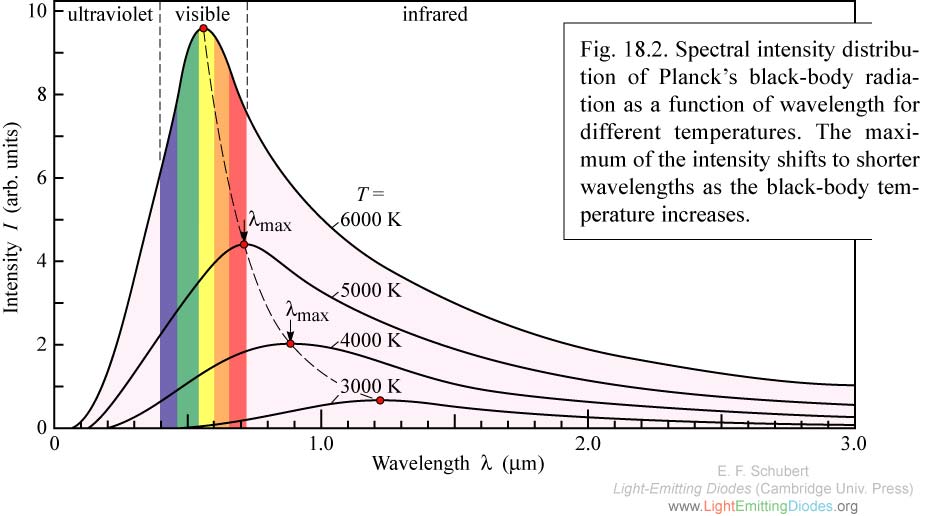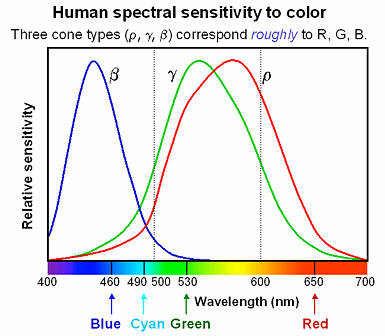
b. 14 March 1879
d. 18 April 1955
I will not attempt to explain the contributions that Einstein made to physics in this little biographical sketch. For one thing, I don't understand the majority of what he wrote. For another, I would like to focus instead on his character and life as an interesting and important glimpse into his mind.
Though born in Germany, Einstein did not die a citizen thereof. In fact, he renounced his citizenship for the small price of three German marks and became a naturalized citizen of Switzerland five years later, paying twenty francs. The price of his citizenship notwithstanding, national affiliation was extremely important to him. He both detested and rejected the nationalistic and militaristic government of Germany and embraced the peaceful attitude of Switzerland. To the end of his life, Einstein remained a pacifist, conceding only that military force should be used to combat institutions which "pursue the destruction of life as an end in itself."
He further hated the German educational system which consisted of rote studies and a particular deference to authority. Though it is often stated that Einstein was a poor student, the more accurate statement is that he did not thrive in the stifling classroom being forced into a discipline in which he was not naturally engaged.
In fact, after being rejected from the Zürich Polytechnic Institute, Einstein spent a year in Aarau, Switzerland where he succeeded in a flexible education with a casual teacher who allowed Einstein a liberty of thought that was necessary for his future discoveries. About the necessity of such liberty he wrote that "it is, in fact, nothing short of a miracle that the modern methods of instruction have not yet entirely strangled the holy curiosity of inquiry; for this delicate little plant, aside from stimulation, stands mainly in need of freedom."
His ability to thrive in a self-determined schedule accounts for his eventual success at the Zürich Poly (having been accepted after a second application). He largely ignored his classes, showing up only for the exams which he passed due to the copious notes of his studious friend Marcel Grossmann. After graduation, Einstein found his desired freedom in an unlikely place. He was refused a position as an assistant at the Zürich Poly (perhaps due to some underhanded manipulation by a professor who disliked him) and accepted a job at the Bern Patent Office in 1902 where he was assigned to read and approve patent applications. The job proved useful, however, in that it was not difficult. He spent his spare time theorizing and conducting gedankenexperiemnts (literally: thought experiments) which are designed to prove a principle without actually having to conduct the experiment physically.
Einstein was so successful in this free environment that he published three papers in the 1905 edition of Annalen der Physik each on a different subject. The first, for which he eventually won a Nobel Prize, explained the connection between the photoelectric effect and quantum mechanics. The second paper treated molecular behavior. The third was his inspired explanation of relativity which gave rise to spacetime. To restate for emphasis, during seven years working as a patent clerk, Einstein published—among others—a Nobel Prize winning paper and the foundational paper for the most (culturally) famous development in science.
Inevitably, Einstein was noticed by the scientific community. He subsequently worked in Berlin at the Prussian Ministry of Education with Max Planck (a great scientist in his own right who wrote of him, "All in all, one can say that among the great problems, so abundant in modern physics, there is hardly one to which Einstein has not brought some outstanding contributions.") and at Princeton. But the former was overrun with Nazis and the latter boring yet peaceful enough for him to, as he wrote to the Queen of Belgium with whom he had apparently frequent correspondence, "create for [himself] an atmosphere conducive to study . . . free from distraction."
He was married twice. And though the first marriage failed due probably to a lack of attention to his family in favor of scientific pursuits, he remained supportive of his first wife and children, sending them his prize money after receiving the Nobel Prize in 1921 (two years after his marriage to his second wife, Elsa). Elsa was described as "gentle, warm, motherly, and prototypically bourgeoisie." She enjoyed the fame of her husband's publications and tolerated his absence and distractions.
Notably, Einstein's genius was not happened upon, nor was it easy to obtain. Though none can deny his natural ability in theoretical physics, the secret to his success was work. Though some concepts eventually unfolded before him, others such as his Unified Field Theory never came to fruition. Yet he never ceased his work nor became discouraged. "After all," he wrote, "to despair makes even less sense than to strive for an unattainable goal." Three months before he died, Abraham Pais, one of Einstein's biographers, visited him at home and spoke with him for a half an hour. Einstein had been at his desk working when Pais entered and before Pais was able to leave (a journey of approximately five steps), Einstein was hunched over his desk "oblivious to his surroundings" yet again.
Now, fifty years after his death, Einstein remains one of the most well known names in scientific and even in common history. His developments in theoretical physics, along with those of Planck, de Broglie, Schrödinger and others, laid the groundwork for most if not all of the scientific developments that came thereafter.
In fact, after being rejected from the Zürich Polytechnic Institute, Einstein spent a year in Aarau, Switzerland where he succeeded in a flexible education with a casual teacher who allowed Einstein a liberty of thought that was necessary for his future discoveries. About the necessity of such liberty he wrote that "it is, in fact, nothing short of a miracle that the modern methods of instruction have not yet entirely strangled the holy curiosity of inquiry; for this delicate little plant, aside from stimulation, stands mainly in need of freedom."
His ability to thrive in a self-determined schedule accounts for his eventual success at the Zürich Poly (having been accepted after a second application). He largely ignored his classes, showing up only for the exams which he passed due to the copious notes of his studious friend Marcel Grossmann. After graduation, Einstein found his desired freedom in an unlikely place. He was refused a position as an assistant at the Zürich Poly (perhaps due to some underhanded manipulation by a professor who disliked him) and accepted a job at the Bern Patent Office in 1902 where he was assigned to read and approve patent applications. The job proved useful, however, in that it was not difficult. He spent his spare time theorizing and conducting gedankenexperiemnts (literally: thought experiments) which are designed to prove a principle without actually having to conduct the experiment physically.
Einstein was so successful in this free environment that he published three papers in the 1905 edition of Annalen der Physik each on a different subject. The first, for which he eventually won a Nobel Prize, explained the connection between the photoelectric effect and quantum mechanics. The second paper treated molecular behavior. The third was his inspired explanation of relativity which gave rise to spacetime. To restate for emphasis, during seven years working as a patent clerk, Einstein published—among others—a Nobel Prize winning paper and the foundational paper for the most (culturally) famous development in science.
Inevitably, Einstein was noticed by the scientific community. He subsequently worked in Berlin at the Prussian Ministry of Education with Max Planck (a great scientist in his own right who wrote of him, "All in all, one can say that among the great problems, so abundant in modern physics, there is hardly one to which Einstein has not brought some outstanding contributions.") and at Princeton. But the former was overrun with Nazis and the latter boring yet peaceful enough for him to, as he wrote to the Queen of Belgium with whom he had apparently frequent correspondence, "create for [himself] an atmosphere conducive to study . . . free from distraction."
He was married twice. And though the first marriage failed due probably to a lack of attention to his family in favor of scientific pursuits, he remained supportive of his first wife and children, sending them his prize money after receiving the Nobel Prize in 1921 (two years after his marriage to his second wife, Elsa). Elsa was described as "gentle, warm, motherly, and prototypically bourgeoisie." She enjoyed the fame of her husband's publications and tolerated his absence and distractions.
Notably, Einstein's genius was not happened upon, nor was it easy to obtain. Though none can deny his natural ability in theoretical physics, the secret to his success was work. Though some concepts eventually unfolded before him, others such as his Unified Field Theory never came to fruition. Yet he never ceased his work nor became discouraged. "After all," he wrote, "to despair makes even less sense than to strive for an unattainable goal." Three months before he died, Abraham Pais, one of Einstein's biographers, visited him at home and spoke with him for a half an hour. Einstein had been at his desk working when Pais entered and before Pais was able to leave (a journey of approximately five steps), Einstein was hunched over his desk "oblivious to his surroundings" yet again.
Now, fifty years after his death, Einstein remains one of the most well known names in scientific and even in common history. His developments in theoretical physics, along with those of Planck, de Broglie, Schrödinger and others, laid the groundwork for most if not all of the scientific developments that came thereafter.














